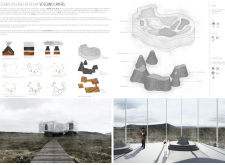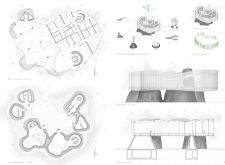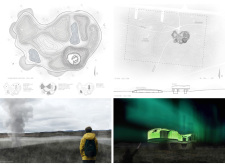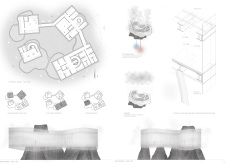5 key facts about this project
The design is characterized by its organic forms, which are inspired by natural volcanic structures. This approach aligns the architecture with the museum's theme, allowing the building itself to become a representation of the subject matter. The main entry leads into spacious exhibition halls devoted to interactive displays and educational resources, aimed at informing visitors of Iceland’s volcanic history and ongoing geological processes.
Site Integration and Unique Geometry
One of the distinctive aspects of the Iceland Volcano Museum is its fluid geometry, mimicking the movements of volcanic eruptions and the flow of lava. The building's layout encourages exploration, with interconnected spaces that promote visitor engagement. This is a notable departure from traditional museum designs that often employ linear pathways. Instead, this project encourages a more organic flow, allowing visitors to transition naturally between different exhibits and learning zones.
The integration of outdoor spaces, such as the Iceland Garden, amplifies the museum's connection to its environment. Designed not only for educational purposes, but also for recreation, the garden enhances the overall visitor experience. It provides a tranquil area for reflection and observation while reinforcing the themes presented within the museum.
Sustainable Solutions and Material Use
The project is marked by its sustainable design principles, incorporating renewable energy systems that utilize geothermal heat sources, common in Iceland. This focus on sustainability does not compromise the structural integrity or aesthetic appeal of the building. By employing local materials, including reinforced concrete and natural stone, the design emphasizes not only regional identity but also ongoing environmental stewardship.
Furthermore, the building features large glazed areas that allow for ample natural light, fostering a connection between the indoor and outdoor environments. This design decision underscores the museum's commitment to creating an inviting atmosphere that promotes awareness of the Icelandic landscape and its geological phenomena.
The Iceland Volcano Museum stands as an exemplar of architectural design that successfully merges educational function, sustainability, and contextual relevance. For a comprehensive exploration of architectural plans, architectural sections, and architectural ideas encapsulated within this project, it is encouraged to review the detailed project presentation available to gain deeper insights into its innovative design and functionality.


























